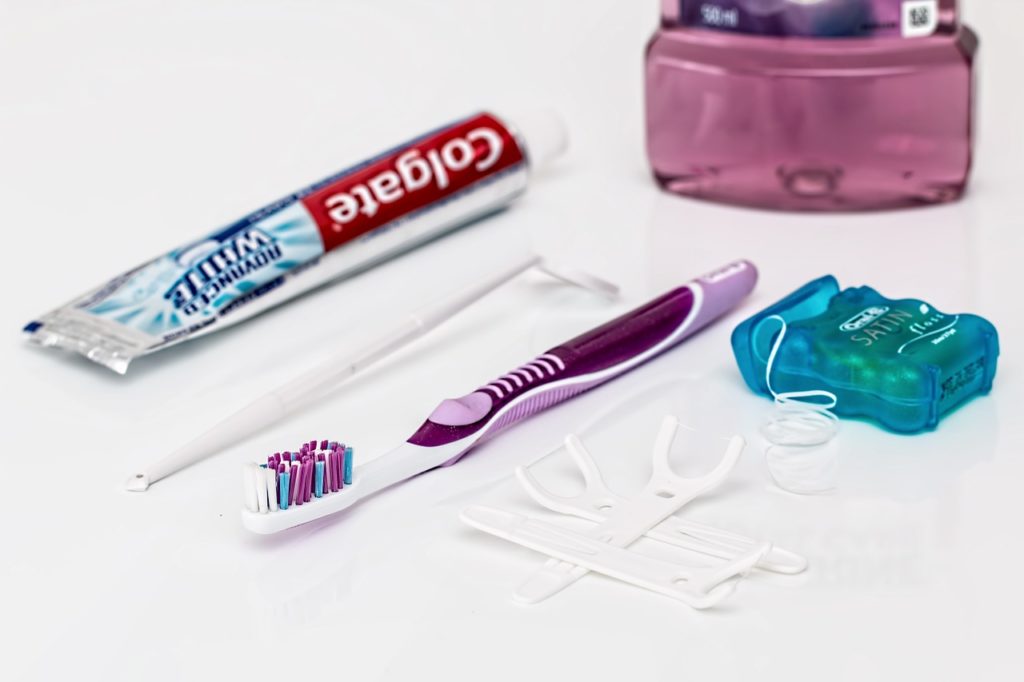Mouthwash (also called as oral rinse, mouth rinse, or mouth bath) is a solution which is used to improve oral hygiene. Mouthwash is held in the oral cavity, and even used to gargle, for about 30 seconds before it is spat out.
Most mouthwashes are antiseptic solutions, which could kill bacteria in the mouth that are responsible for the development of Tooth Decay (Dental Caries), Bad Breath (Halitosis), Gum Disease(Periodontal Disease) and etc. Besides that, there are mouthwashes which offer other beneficial effects, such as anti-fungal mouthwash (treats fungal infections), analgesic mouthwash (relieves pain) or saliva substitute for patients suffering from Dry Mouth (Xerostomia). Cosmetic mouthrinses temporarily control or reduce Bad Breath (Halitosis) and leave the mouth with a pleasant taste.
However, mouthwash does not replace Tooth Brushing and Dental Flossing during daily routine of oral hygiene care.

Types of mouthwash:
Antiseptic mouthwashes have the ability of killing or preventing the growth of bacteria which could cause gum disease (periodontal disease). The common active ingredients of these mouthwashes include triclosan, chlorhexidine gluconate, cetylpyridinium chloride and etc.
Anti-plaque mouthwashes could kill the bacteria in dental plaque, thus limiting the formation of dental calculus. These mouthwashes are commonly used by the patients with poor periodontal (gum) health. The common active ingredients include hydrogen peroxide and etc.
Anti-fungal mouthwashes are effective to treat yeast or fungal infections in the oral cavity. One of the commonest fungal infections is oral candidiasis (also called oral thrush), which could involve any part of the mouth. The common active ingredients of antifungal mouthwashes include miconazole & nystatin.
Mouthwashes against bad breath have the purpose of decreasing halitosis (bad smell of the mouth). Their active ingredients include essential oils, cetylpyridinium chloride and sanguinarine.
Anticavity mouthwashes kill the bad bacteria that cause tooth decay (dental caries). Most toothpastes contain agents that fight against tooth decay (dental caries), thus anticavity mouthwashes are only recommended for patients who are at high risk of tooth decay (dental caries), or those who suffer from dry mouth (xerostomia). The major active ingredients in anticavity mouthwashes include fluoride and xylitol.
Analgesic and anti-inflammatory mouthwashes are used for patients who suffer from painful conditions in the mouth, such as aphthous ulcers (aphthous stomatitis). The main ingredients include benzydamine & betamethasone.
Saliva substitutes are mouthwashes directed to patients who suffer from dry mouth (xerostomia). The active ingredients of these mouthwashes include lactoperoxidase & lactoferrin.
Whitening mouthwashes are designed specifically to whiten the teeth. Their active ingredient of these mouthwashes is hydrogen peroxide.

Mouthwash is used to rinse the mouth and gargle the throat twice a day. Mouthwash should not be used immediately before or after tooth brushing so that the beneficial antimicrobial residues of both substances will not be washed away. It is advisable to wait for at least 30 minutes between the tooth brushing and using mouthwash.
According to studies, it is proven that tooth brushing and flossing are sufficient to maintain good oral hygiene. However, it is recommended to use the mouthwash in addition to tooth brushing and flossing for good oral health.
Steps Of Using Mouthwash Correctly are shown below:
- Pour the right amount of mouthwash (according to the manufacturer/brand) into your mouth .
- Rinse vigorously in your mouth for 30-60 seconds.
- At this point you may spit this solution out & use new solution to gargle, or you may use the current solution in your mouth to gargle.
- Gargle the solution for 30-60 seconds as well. 30-60 seconds might seem long but it is important to do so because a lot of the bacteria that causes bad breath resides at the back of the mouth and the throat.
- Spit out the solution into the sink.

What Are The Side Effects Of Using Mouthwashes?
Even though mouthwashes could aid in maintaining good oral hygiene, mouthwashes might cause certain side effects as well. Most of the side effects are mild but important to consider. The side effects include:
- Staining of teeth and prosthesis such as dentures.
- Temporary taste disturbance.
- Dry mouth (xerostomia).
- Tooth sensitivity (if using Whitening mouthwashes).
- Burning sensation of the gums and the oral mucosa.
If a person is allergic to some of the ingredients in mouthwash (such as preservatives), red spots or ulcers might form. In some cases, it is recommended to stop the commercial mouthwash and replace it with warm water and salt.
Always bear in mind that mouthwash does not replace Tooth Brushing and Dental Flossing during daily routine of oral hygiene care. Use Mouthwash in addition to Tooth Brushing and Flossing daily for Good Oral Health. In addition to that, for complete oral health care, it’s important to visit a dentist every 6 months for a regular dental checkup and professional cleaning.
Article written by,

Dr. Wong Kee Cheong (Tommy)
Dental Surgeon
BDS (AIMST), MBA (SEGi), YCDP

